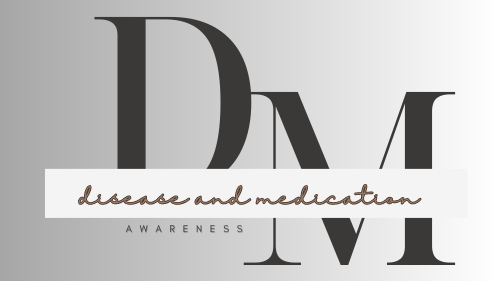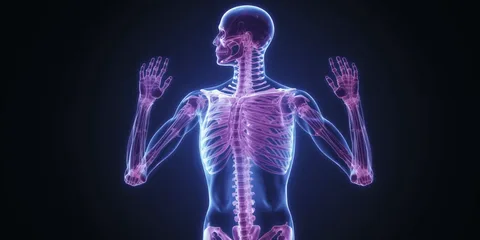Osteoarthritis (Degenerative Joint Disease or DJD) DJD ICD 10 is an agonizing illness and is progressive and chronic. Following the increasing cases of DJD, effective medical documentation and coding have become a vital measure in diagnosing the condition, planning of treatment and insurance requirements. This is where the ICD-10 code of DJD takes the scene.
Here in our blog post we will discuss the definition of DJD, symptoms of DJD, causes of DJD and its treatment. and in detail we will see the ICD-10 coding of DJD or the Degenerative Joint Disease.
What is Degenerative Joint Disease (DJD)?
DJD ICD 10 is a degenerative form of arthritis, the end result of which is cartilage breakdown on joints. The protective tissue that covers the tip ends of the bones is called cartilage and it cushions the bones as one moves. In its deteriorating state, bones start to rub together resulting in pain, stiffness and swelling with compromised mobility.
Long term, DJD may result in:
- Joint deformities
- Failure of functioning
- The growth of bone spurs Bone spur formation
- Long term pain and inflammation
The condition mainly occurs in the knees, hips, the spine, and hands although all the joints of the body can be affected.
Common Symptoms of DJD
The symptoms of Degenerative Joint Disease often develop slowly and worsen over time. Key symptoms include:
- Pain in joints, and more specifically in case there is a motion or exercise
- Joint stiffness as in the morning or after rest
- Swelling of joints affected
- Flexion or range of motion loss
- Grinding or popping feelings
- The bone spurs can become like hard lumps in and around joints
Causes and Risk Factors
DJD is produced by damage to the joint accumulated throughout several years of life, but a number of factors may enhance the development of the disease:
- Age: The risk is more after the age of 50
- Genetics: There may be a family history of osteoarthritis which makes one susceptible
- Injuries: Pre-existing joint injuries may cause early degeneration
- Repetitive Stress: Jobs or sports which require repetitive actions, or joint strains
- Gender: Women particularly those past menstrual age have high chances of developing DJD
What Is The Diagnosis Of DJD?
There are usually:
- Review of medical history
- Physical examination as a way to see whether joints are tender, inflamed, or restricted in motion
- X-rays or MRI to find out the loss of cartilage, alteration of bones, or reduction of joint spaces
- Blood tests to exclude the other types of arthritis that include rheumatoid arthritis
A correct way of coding comes in once the diagnosis has been made to relate the condition to be treated and the insurance approved.
ICD Code of Degenerative Joint Disease
The International Classification of Diseases, 10th Revision (ICD-10) is a medical standard, internationally utilized in documenting the medical diagnosis. They have a particular code assigned to each condition to guarantee uniformity in the billing and medical records and data collection.
ICD-10 codes of DJD are dependent on the joint affected and the laterality (i.e. the side of the body) affected. DJD falls in the following category:
ICD-10-CM: M15; M19
These codes are coded under Chapter 13: Diseases of the musculoskeletal system and connective tissue, which is Osteoarthritis.
Below are examples of appropriate DJD ICD-10 codes:
- M17.0 – Bilateral primary osteoarthritis knee
- M17.11 – Right knee unilateral primary osteoarthritis
- M16.11 – Unilateral osteoarthritis, primary right hip
- M19.90 – Unspecified osteoarthritis, site unspecified
- M47.812 – Spondylosis without myelopathy or radiculopathy (in the cervical region) (in spine DJD)
Important:
The code has to be selected according to particular joint and laterality.
Appropriate utilisation of ICD-10 codes is essential with regards to reimbursement of insurance and follow-up of the treatments.
Options of Treatment of DJD
Though DJD is not a treatable condition and it has no permanent solutions, a combination of lifestyle and medication is effective in reducing the symptoms and enhancing quality of life.
Medications
- Pain relievers such as acetaminophen analgesics
- Injection of corticosteroid against severe inflammation
- Topical analgesics
Physical Therapy
- Specific exercises aimed at building up muscles and flexibility of joints
- Moderate forms of aerobic exercises such as swimming or cycling
Lifestyle Modifications
- Reduction of stress in joints by weight loss
- Well-fitted shoes and aids (e.g. braces, canes)
- Avoiding the heavy impacting activities
Surgical Interventions
- Joint realignment in case-selected conditions or knee arthroscopy
Pervading Degenerative Joint Disease
The proactive and multidisciplinary approach is necessary in living with DJD:
- Consistent regime of physical activities depending on the degree of mobility
- Healthy nutrition with lots of anti-inflammatory foods
- Sharing safety approaches to prevent excessiveness
- Regular follow-up with your doctor
Emotional well-being can also be improved through support groups, counseling and pain management programs.
ICD-10 Coding: A Vital Part of Quality Healthcare
ICD-10 coding does not only represent a bureaucratic exercise, but it is a vital part of quality and efficiency in healthcare:
- Facilitates treatment planning
- Eases insurance payments and claims
- Enhances research and tracking of data
- Decreases billing errors and refusals of payment
On the part of healthcare providers, a thorough knowledge and application of the right ICD-10 code relating to DJD will help in there being a clear communication at all levels of healthcare service provision.
Conclusion
Degenerative Joint Disease DJD ICD 10 is a widespread disease that can cause serious dysfunction, to the extent of becoming debilitating to millions of people across the world. Its symptoms may be as insignificant as mild stiffness of the joints and as problematic as acute pain and lack of mobility to carry out regular activities in day-to-day life. Though nothing can be done, early diagnosis allows and proper treatment and lifestyle modifications can make the situation much better.
Knowledge on the ICD-10 coding DJD is necessary by healthcare providers and the patient. It will guarantee the documentation of diagnosis, assist with insurance, and enable the delivery of comparable care.
As a patient or a medical professional attempting to treat the patient, regardless of what case you are in, knowledge is power, especially with proper information on your side.

